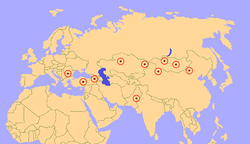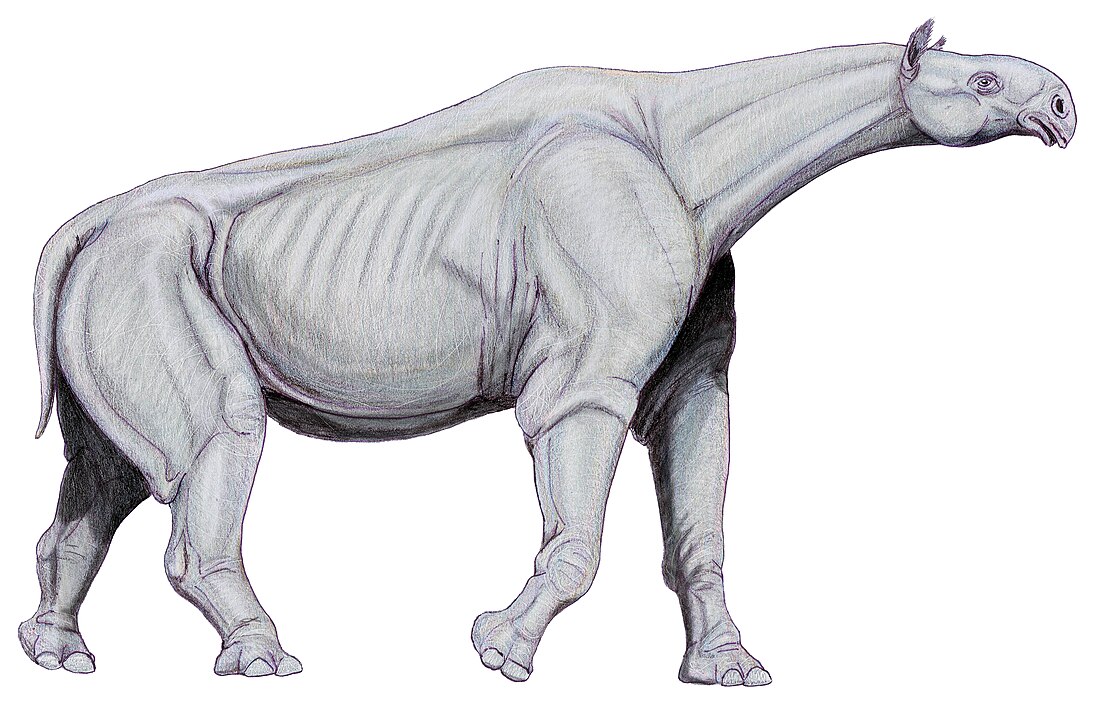巨犀属
来自维基百科,自由的百科全书
巨犀属(学名:Paraceratherium)为巨犀类下的一个属,为一种已经灭绝的犀牛,生活在渐新世。巨犀也是目前已知最大的陆行哺乳动物,估计成年巨犀平均高5.2公尺(18呎),身长为8.2公尺(27呎),重约22吨,为植食性,巨犀使用似獠牙状的上颚齿与下颚齿来觅食树叶。
| 巨犀属 化石时期:渐新世;
| |
|---|---|

| |
| 巨犀重建图 | |
无效状况
| |
| 科学分类 | |
| 界: | 动物界 Animalia |
| 门: | 脊索动物门 Chordata |
| 纲: | 哺乳纲 Mammalia |
| 目: | 奇蹄目 Perissodactyla |
| 科: | †巨犀科 Paraceratheriidae |
| 亚科: | †巨犀亚科 Paraceratheriinae |
| 属: | †巨犀属 Paraceratherium Forster-Cooper, 1911 |
| 模式种 | |
| †布格蒂巨犀 Paraceratherium bugtiense Pilgrim, 1908
| |
| 种 | |
| |

| |
| 异名 | |
|
属异名
种异名
| |
词源学
巨犀的属名来自希腊语,Para意为“接近的”,A作为前缀,表示“没有的”,Ceras意为“角”,therium意为野兽,整个属名大意为“接近无角犀的野兽”。巨犀的模式种Paraceratherium bugtiense种名取自出土地——德拉布格蒂(Dera Bugti)山丘地区,人们在那里首次出土巨犀的化石。[1]
-
P. transouralicum 头颅骨化石。
参考文献
外部链接
Wikiwand - on
Seamless Wikipedia browsing. On steroids.


